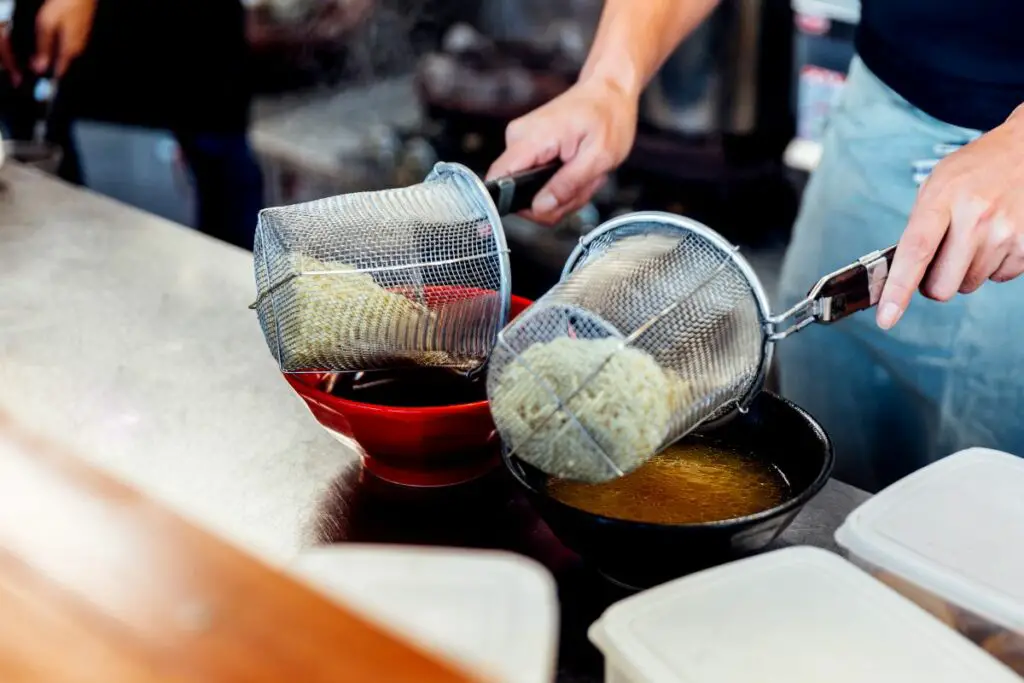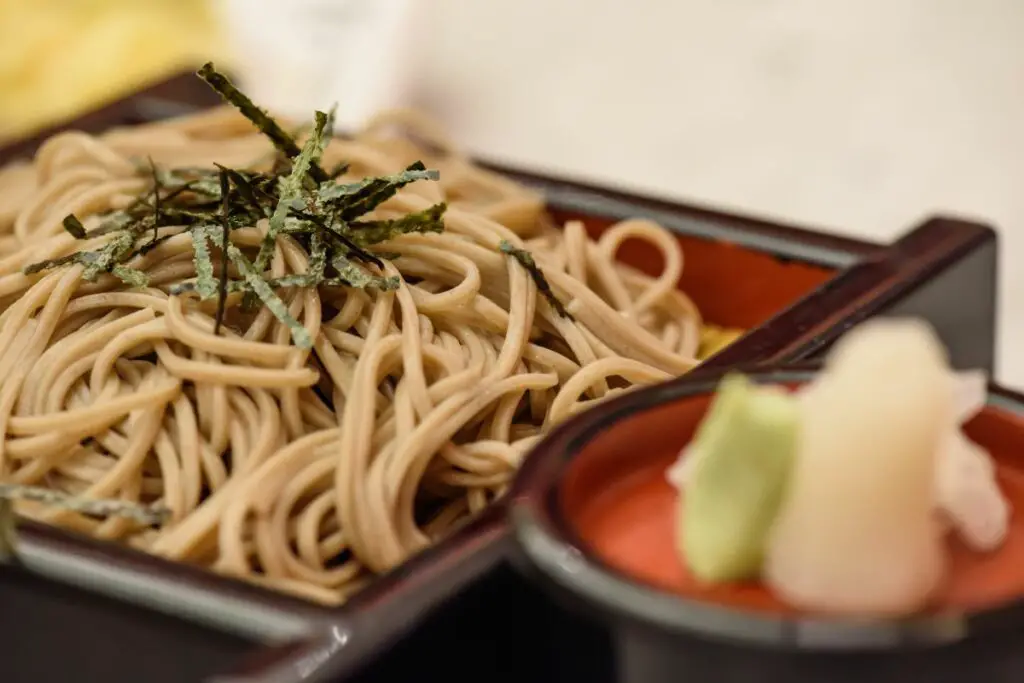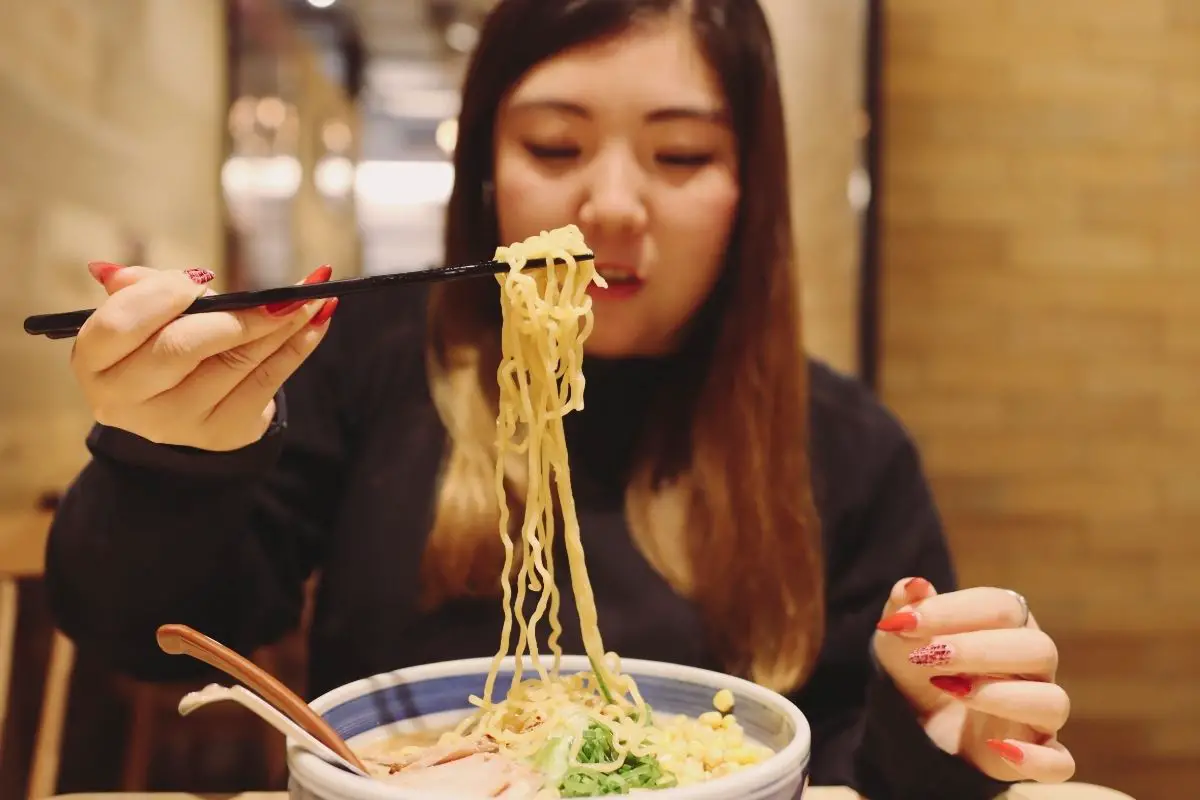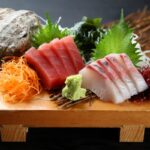Ramen has become an international sensation over the past few years, with its rich and complex broth, tender noodles, and an array of toppings that make it a truly satisfying meal.

What many people don’t realize is that not all noodles are created equal when it comes to ramen. The type of noodles you use can significantly affect the overall flavor and texture of the dish.
So, what noodles should you use for ramen? Let’s take a closer look.
What Are The Best Noodles To Use For Ramen?
When choosing the right noodles for your ramen, there are a few options to consider. Here are some of the most common types of noodles used in ramen.
Chukamen
Chukamen is the most popular type of noodle used in ramen. These noodles are made from wheat flour, water, and kansui, which is an alkaline mineral water that gives the noodles their characteristic yellow color and springy texture.
The alkaline solution changes the pH of the dough, making it more elastic and chewy.
Chukamen noodles are typically sold fresh or dried and come in a variety of shapes and sizes, ranging from straight to wavy, and thick to thin. The most common shape is straight and thin, which is perfect for absorbing the rich, flavorful broth in ramen.
To cook chukamen noodles, bring a pot of water to a rolling boil and add the noodles. Boil the noodles for 2–4 minutes (depending on the thickness of the noodles), then drain and rinse them under cold water to stop the cooking process.
Chukamen noodles are a crucial element in ramen, and their texture and flavor can greatly impact the overall quality of the dish.
When preparing ramen at home, it’s important to choose the right type of chukamen noodles that complement the broth and toppings you plan to use.
With a little experimentation, you can find the perfect chukamen noodle to suit your taste preferences.
Soba

Soba is a type of Japanese noodle made from buckwheat flour and wheat flour. It has a slightly nutty flavor and a distinctive texture that sets it apart from other types of noodles.
Soba noodles are often served chilled with a dipping sauce, but they are also used in hot dishes like ramen.
In ramen, soba noodles are typically used in lighter broths like shoyu or shio ramen. The delicate flavor and texture of soba noodles complement these broths well, and they are often paired with lighter toppings like green onions and seaweed.
To cook soba noodles for ramen, bring a pot of water to a rolling boil and add the noodles. Boil the noodles for 4–5 minutes, stirring occasionally to prevent them from sticking together.
Drain the noodles and rinse them under cold water to stop the cooking process.
When selecting soba noodles for ramen, it’s important to choose high-quality noodles that are made with pure buckwheat flour. Some soba noodles are made with a mixture of buckwheat and wheat flour, which can affect the flavor and texture of the noodles.
Look for soba noodles that have a slightly brownish color and a nutty aroma, which are signs of high-quality noodles.
Udon
Udon is a type of thick, chewy Japanese noodle that is made from wheat flour, salt, and water. Udon noodles are typically white and have a neutral flavor, which makes them a versatile ingredient in a variety of dishes, including ramen.
While udon noodles are not as commonly used in ramen as chukamen or soba, they can add a unique texture and flavor to the dish. Udon noodles are thicker and chewier than chukamen noodles, and they are perfect for hearty broths like tonkotsu ramen.
To cook udon noodles for ramen, bring a pot of water to a rolling boil and add the noodles. Boil the noodles for 8–10 minutes, stirring occasionally to prevent them from sticking together. Drain the noodles and rinse them under cold water to stop the cooking process.
When selecting udon noodles for ramen, it’s important to choose high-quality noodles that are made with pure wheat flour, as some udon noodles are made with additives like cornstarch or tapioca starch.
Shirataki
Shirataki noodles are a type of Japanese noodle made from the corm of the konjac yam. They are also sometimes called konjac noodles. Shirataki noodles are very low in calories and carbohydrates, and they are a popular ingredient in many low-carb and gluten-free recipes.
Shirataki noodles are translucent, gelatinous, and have a slightly chewy texture. They have a neutral flavor and are often used as a low-carb substitute for pasta or noodles in dishes like ramen.
To prepare shirataki noodles for ramen, they should be rinsed well under cold water and then boiled for a few minutes to remove any excess starch and improve the texture. Some people also recommend soaking the noodles in a mixture of water and vinegar or lemon juice to reduce any residual odor.
While shirataki noodles may not have the same texture or flavor as traditional ramen noodles, they can be a great option for those who are looking to reduce their carbohydrate intake or avoid gluten.
Final Thoughts
Choosing the best noodles for ramen ultimately comes down to personal preference and the type of broth and toppings you plan to use.
Chukamen noodles are the most traditional and commonly used noodle in ramen and are perfect for rich, flavorful broths like tonkotsu and miso. Soba noodles are a great option for lighter broths like shoyu and shio ramen and can add a unique flavor and texture to your dish.
Udon noodles are thick and chewy and can add a hearty element, and shirataki noodles are a low-carb and gluten-free option.
Ultimately, the best noodles for ramen are the ones that complement the flavors and textures of the broth and toppings to create a delicious and satisfying bowl of ramen!








